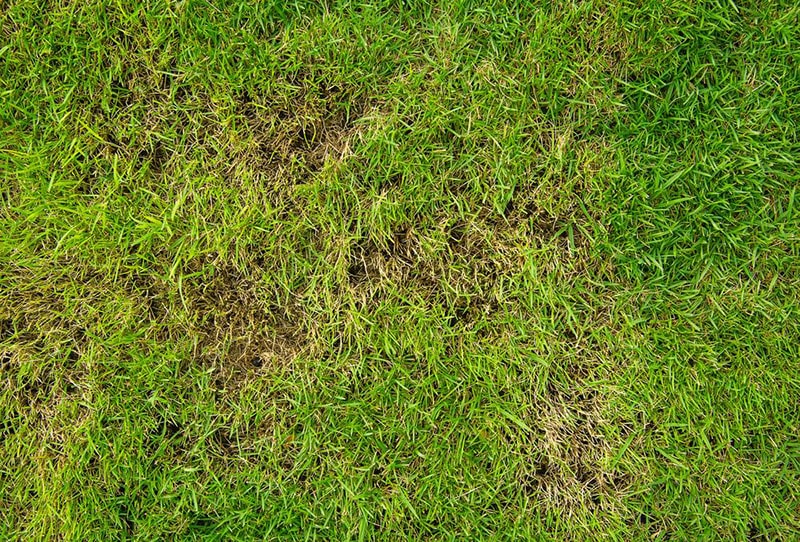 Lawn Care And Lawn Maintenance
Lawn Care And Lawn Maintenance
Is your current lawn old and looking tired and you keep asking yourself the question ‘how can I renovate an ugly old lawn’?
Is it patchy and lumpy looking?
Is your lawn weed infested even after applying weed control products regularly?
If any of these questions are true of your lawn, this article will guide you on the ways you can restore your lawn and get it back to looking great.
Deciding to renovate your existing lawn or scrapping the entire lawn altogether and start from scratch is a difficult decision.
For your efforts to bear fruits, you need to figure out why you want to or need to restore your lawn.
If you do not determine the problem, fixing the lawn can be tough. For instance, when over seventy percent of the grass in your lawn is dead, whether it is because of being cut too short, soil compaction or not receiving enough water, the easiest way to renovate your lawn is removing the grass and starting afresh.
However, if your lawn is infested with weeds or has several dry patches, you can still just concentrate on these areas and make your lawn look great again.
Today we are going to guide you on how to renovate a lawn that is more than 50 percent dead and how to maintain it in top shape.
The first thing to do is contacting a local extension service to test your soil to see whether you will need to amend it. Once you have the results, you can order for compost and amend your soil as per the instructions.
Next, you need to rent some power tools such as the sod cutter that will help you to cut the dead grass and a rotary tiller to blend the amendments.
These power tools can help you to renovate about 1,500-square feet of lawn in one weekend.
The following tips will assist you in renovating your lawn easily.
Getting Started
Remove The Old Grass
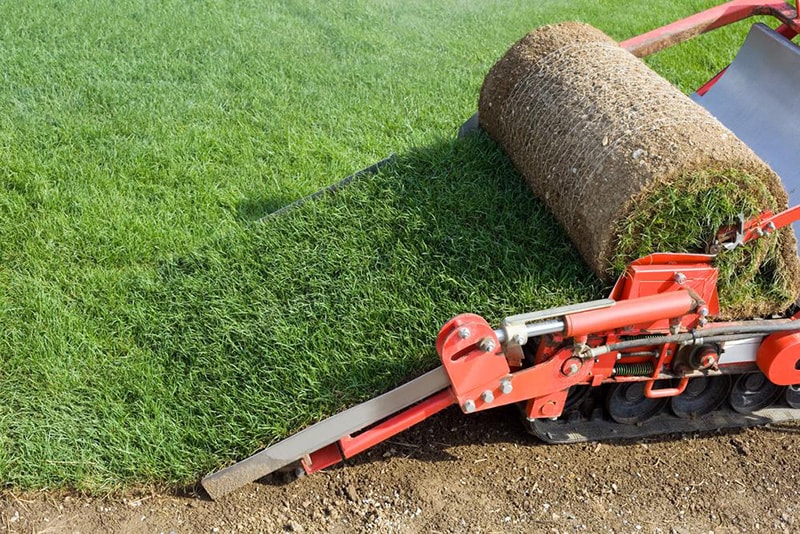 Hire a sod cutter and use it to remove the old, dry grass. This power tool will help you to cut the grassroots while making long tiles of loose sod.
Hire a sod cutter and use it to remove the old, dry grass. This power tool will help you to cut the grassroots while making long tiles of loose sod.
This machine is easy to use and helps you to remove old grass quickly and effortlessly.
You can make use of your hoe to eliminate the tight spots around the house.
After cutting the long strips, chop them into manageable pieces with a spade and scoop them into your wheelbarrow.
Take this waste to your compost.
Till The Soil And Add Compost
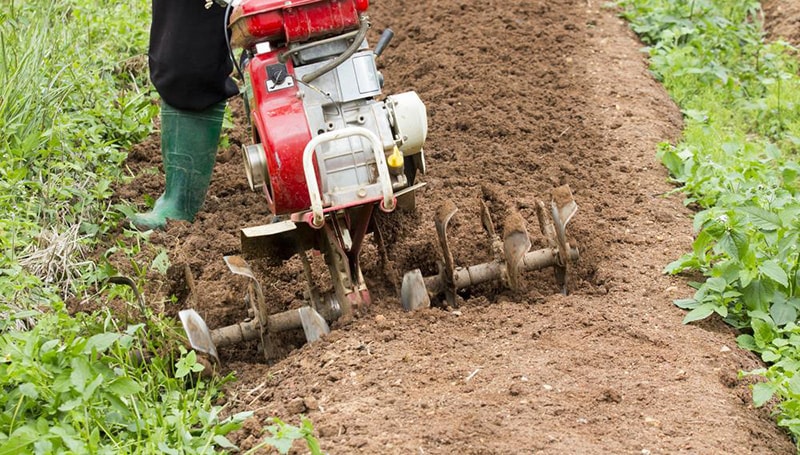 The next step is loosening your soil.
The next step is loosening your soil.
A rotary tiller will help you to loosen about 2-4 inches of the soil.
For heavily compacted soil, look for a rear line till. However, if the soil is loose, a midline tiller is a better choice.
Then you will need to add compost to improve the drainage and give the grass the nutrients it needs to grow well.
Spread manure about 3-inches deep and add about one inch of sand to clay soil to improve the drainage.
Use the tiller to blend these components with the soil thoroughly.
Grade The Soil
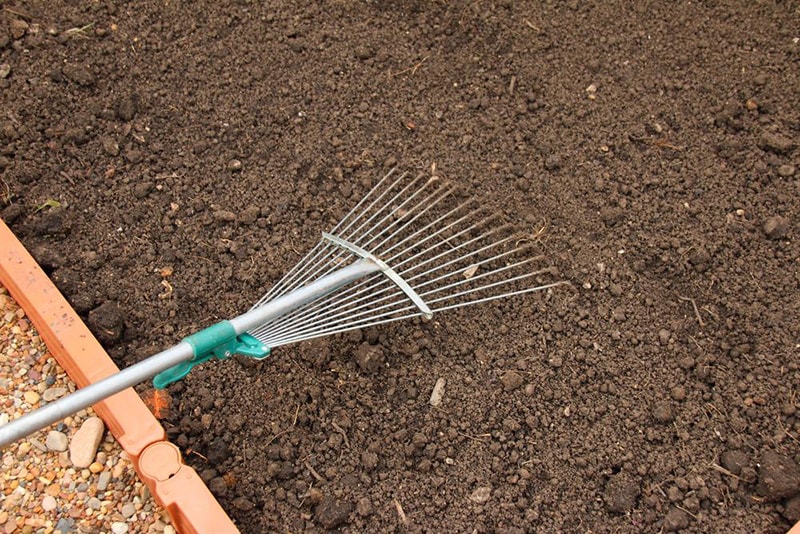 The next step is to smooth out your lawn using a grading rake.
The next step is to smooth out your lawn using a grading rake.
Use the rake to amend the top two inches until no lumps are remaining.
Smoothening and amending the topsoil is easy.
Begin by holding the rake closer to the ground to allow the teeth to blend the soil thoroughly. Hold the rake handle higher until all the soil is smooth.
To avoid fatigue or back pain, take short strokes and complete small patches at a time.
Picking The Right Grass
There is a variety of grass available on the market.
Some of the factors you need to consider include the quality of sod you expect, drought tolerance, how you want to use it, the effort needed for maintenance as well as resistance to insects and diseases.
Always stay away from cheap blends of seeds as this could lead to uneven germination or low-quality grass.
You should also avoid selecting mixes with noxious weeds, annual grasses, and seeds with low germination percentages.
Spreading The Grass Seed
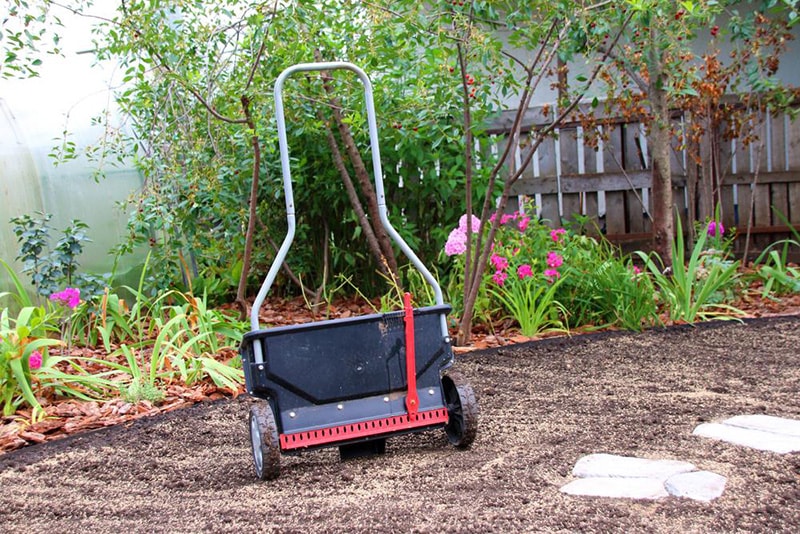 Use a spreader to add nutrients as per the recommendation from your soil testing service.
Use a spreader to add nutrients as per the recommendation from your soil testing service.
You can then spread the new seeds with the spreader set at its broadest extension.
For the best results, overlap each pass by a few inches. After spreading the seeds, water the lawn well every day until all the seeds have germinated.
General Lawn Maintenance
Reseeding Small Patches
If there are any holes or low spots, you need to fill them before replanting.
Ensure that your lawn is level and takes care of any other drainage problem.
After the grass has germinated, you may need to reseed small patches that may be left bare.
Here you will require a garden weasel. This tool will allow you to rough the small areas and tight spaces allowing you to make good seed to soil contact.
Mulch Large Bare Spots
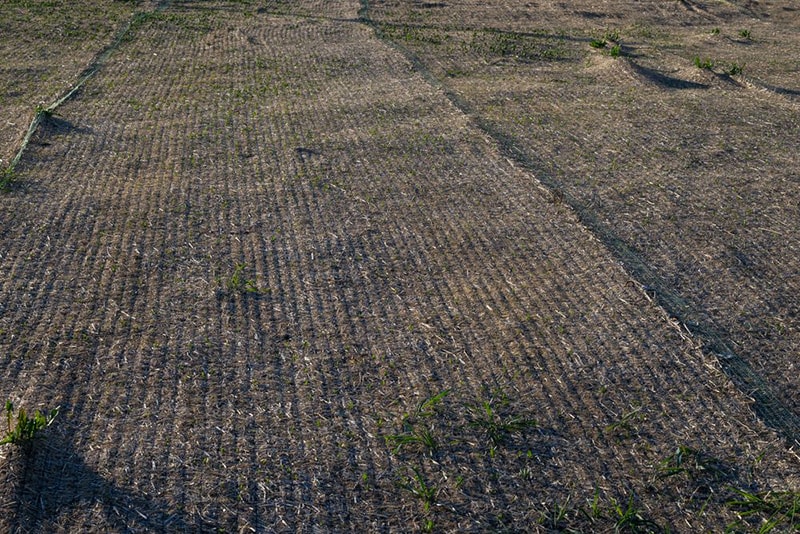 Marsh hay or weed-free straw will help you to prevent erosion and conserve moisture.
Marsh hay or weed-free straw will help you to prevent erosion and conserve moisture.
Some of the other materials that you can use for mulching including paper pellets, wood fiber materials or any other erosion control blankets.
Erosion blankets are very useful especially if you are planting the seeds on a slope.
Most of the erosion blankets allow the grass to grow through them and decompose after some time, meaning you do not have to remove them.
Water Your Lawn Regularly
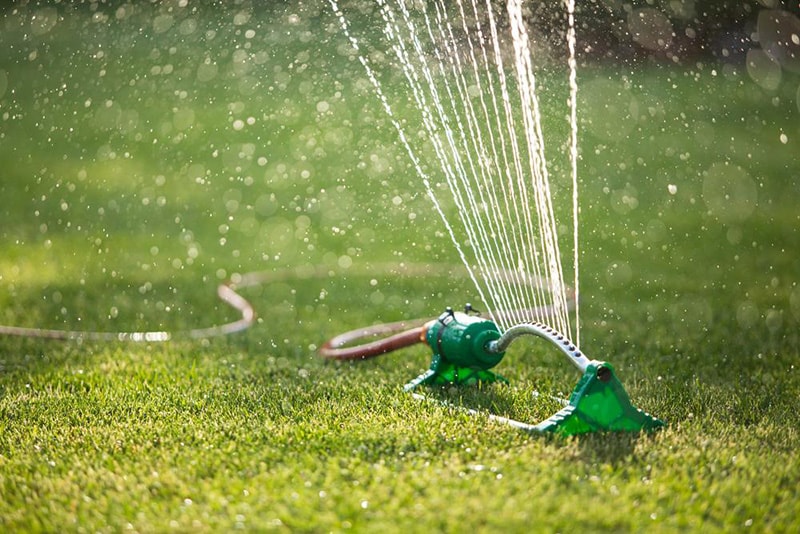 The new seeds, as well as the young seedlings, require a lot of water.
The new seeds, as well as the young seedlings, require a lot of water.
Ensure the lawn is moist all the time until the grass covers the ground.
When watering the seeds, ensure there is no runoff as this could cause erratic germination.
You can increase the water as the grass continues to grow and reduce the watering interval when the grass has covered the ground.
Fertilize Your Lawn
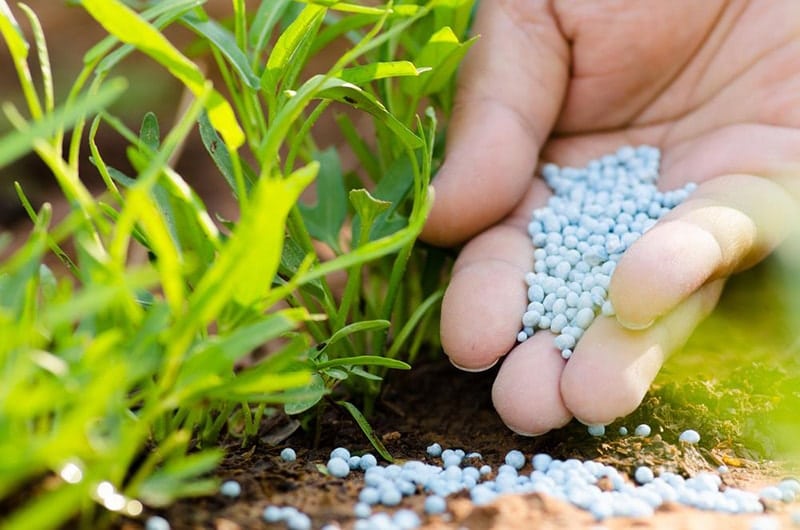 After 4-5 weeks after seeding, apply 1 lb. Nitrogen/1,000 square feet.
After 4-5 weeks after seeding, apply 1 lb. Nitrogen/1,000 square feet.
This will increase the shoot density and enhance the color.
Additionally adding this fertilizer will improve the seedlings ability to withstand rust and diseases.
Mowing
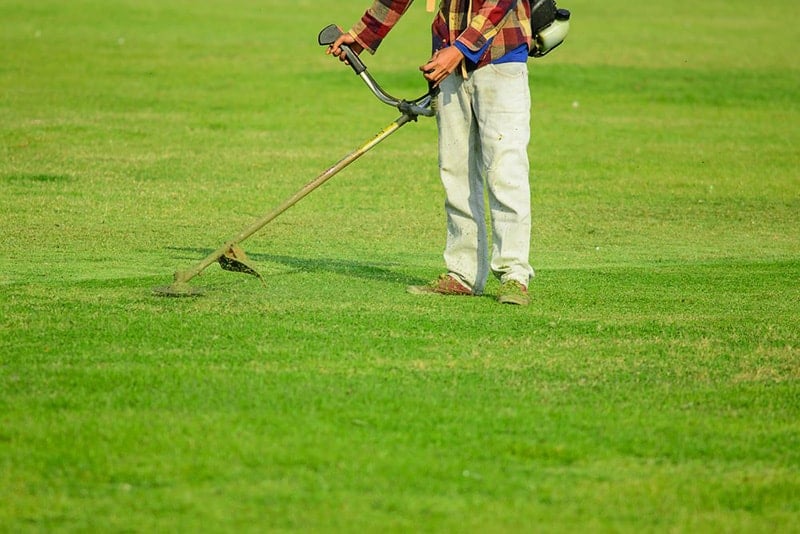 After more than 70 percent of the grass has reached 2-3 inches, you can now start mowing.
After more than 70 percent of the grass has reached 2-3 inches, you can now start mowing.
Mowing will enhance lateral shoot development, increasing the stand density.
While mowing it is important to ensure that your mower blade is super sharp as dull, blades will tear young seedlings from the soil.
Weeding The Lawn
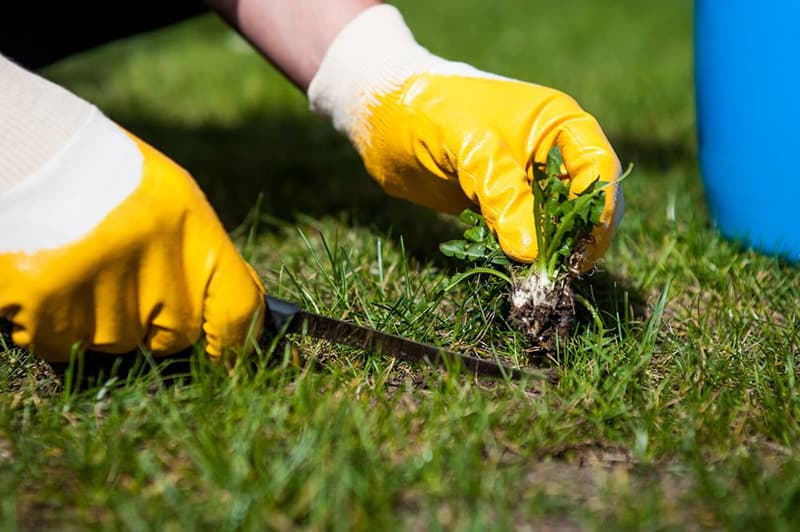 After mowing twice or the grass has covered more than 80 percent of the ground, you can now start using the weed control products.
After mowing twice or the grass has covered more than 80 percent of the ground, you can now start using the weed control products.
However, take care as you may still have young seedlings that are not yet hardy to withstand the weed control products.
Using the above tips will help you to renovate your lawn quickly to have a beautiful yard that you can be proud of.
After the grass has fully developed, you can now enjoy your lawn.
You have worked for it, so you can now use it for baseball, parties, picnics or any other outdoor adventure you have in mind.
This article was contributed by Dianne Lampe, a person passionate about all things related to gardening. She blogs about indoor and outdoor planting as well as offering useful information about the best gardening products.
